
How to Use a Drag Chute for Faster Swimming
Looking for tips on how to use a drag chute for improved swim performances? Read on for some proven tips, sets, and pointers for training with a chute.
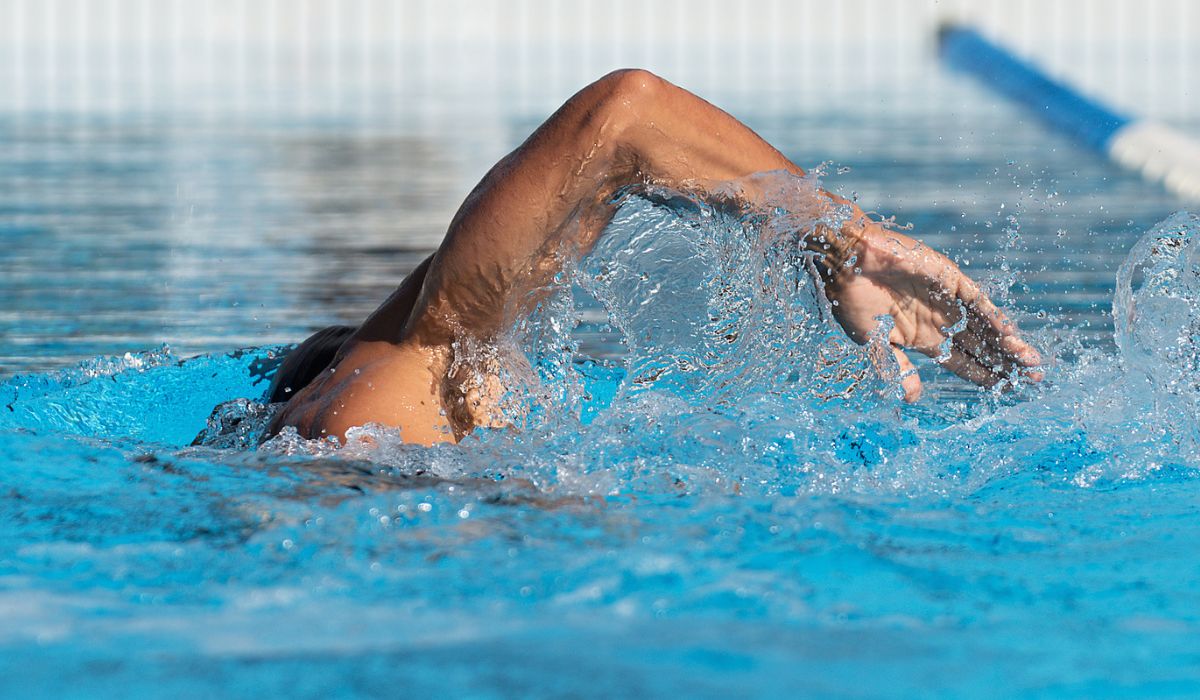
Curious whether laps and lengths are the same in swimming? Here’s a deep dive into how they are essentially the same thing with some key differences.
Swimmers and water enthusiasts have their fair share of debates about swim terminology, which can frequently seem highly confusing to outsiders.
Why do we call it a pair of Speedos when it’s technically one swimsuit? Is it “dual meet” or “duel meet”? What does “negative splitting” mean?
And one of the lively debates is how to define a lap in swimming.
Is it lap or length? Is a lap in swimming where the swimmer completes two lengths of the pool and returns to the starting point, as in track?
Or is it a single completion of the “course” of swimming, whether that’s a 25y or 50m length pool?
In pool swimming, a lap and a length are the same, but how the two terms are used can be confusing. Major swim organizations, most competitive swimmers, and swim trackers agree that both laps and lengths indicate a swimmer has moved from one end of the pool to the other once.
But there are some grey areas where the two terms do not mean the same thing in the pool and are used differently.
In this guide to defining what a lap in swimming actually is, we will look at what the main governing swimming associations have to say about the matter, and introduce some other key terms that will spice up the debate even further.
Let’s dive in.
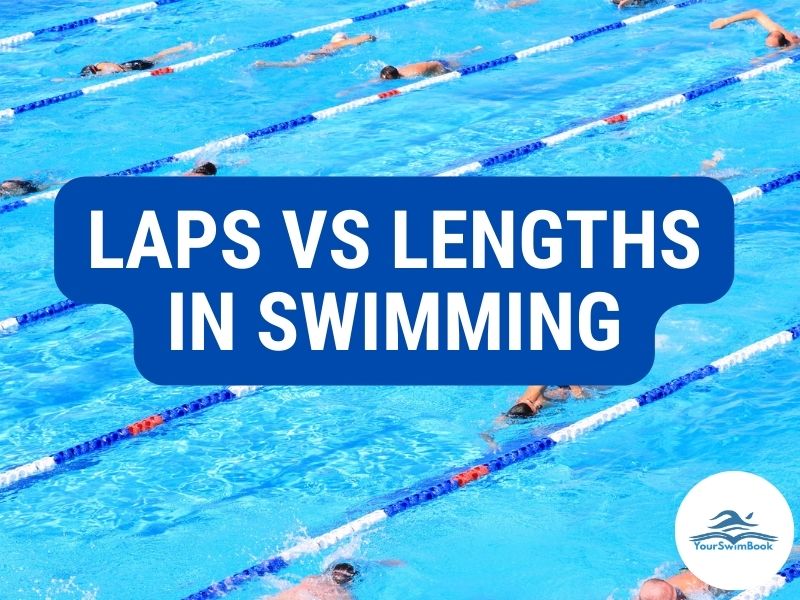
We are going to do a deep dive on the similarities between laps and lengths. We’ll look at how the terms are used in different swim-related situations. And how the terms differ outside of the water.
By the end, I can’t promise that things will be more clear because honestly, even after 30+ years involved in competitive swimming, including international swim meets, summer leagues, and countless daily lap swims at my local pool, there is still some room for ambiguity.
A length in swimming is when a swimmer completes one instance of moving from one end of the pool to another.
A swimming length remains “one length” regardless of the actual length of the swimming pool.
Whether the pool is 25 yards, 25 meters, 50 meters, or as in the case of the Kitsilano Outdoor Pool in Vancouver, BC, a whopping 137 meters, when a swimmer goes from one side of the pool to the other, it’s one length.
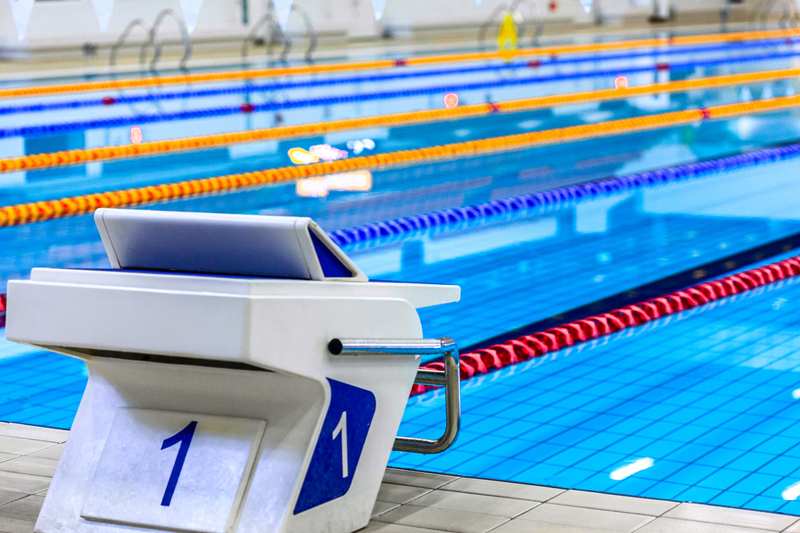
Straightforward enough, right?
Next is where things get tricky…
A lap in swimming, depending on who you ask, is either one length of the pool, or consists of two lengths of the pool.
The latter is based on the comparison to track running or indoor velodromes, where a lap constitutes returning to the starting point.
Webster’s New College Dictionary II defines lap, as it refers to swimming, as “one complete length of a straight course, as of a swimming pool.”
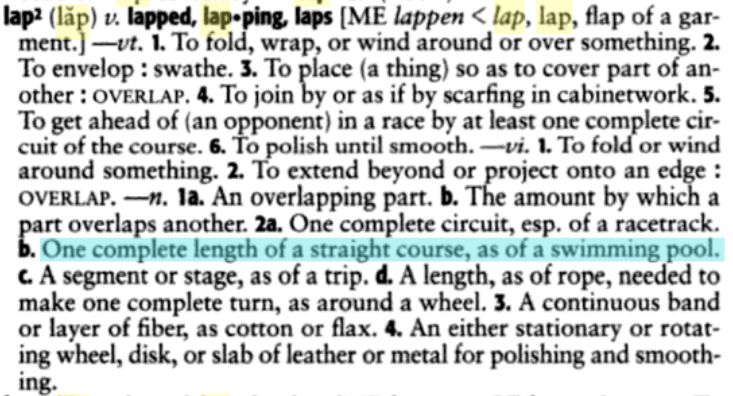
The main governing bodies for competitive swimming also use “lap” and “length” to describe an act of moving from one end of the pool to another.
Next, we will look at how FINA (World Aquatics), USA Swimming, and Swimming Canada use the two terms.
FINA, the world governing body for competitive swimmer, considers length and lap to be one and the same.
In the officiating handbook, distance is counted for individual events like the 800 and 1500m freestyles as a lap.
The officials use “lap cards” at the turning end of the pool that demonstrate to the swimmer, and for official record-keeping, how many laps of the pool the swimmer has completed.
FINA also refers to giving distance swimmers a bell warning when the swimmer “has two lengths plus five (5) meters to swim to finish.”
Being the world governing body for the sport, FINA language and rules filters down to the national governing bodies of sport.
USA Swimming, representing the world’s most dominant competitive swim teams, mentions lap and length interchangeably in its officiating handbook.
However, when performing a CTRL+F search of the document, “length” is used 14 times while “lap” is used just four times.
They also provide a very specific length definition, with no definition of lap within its handbook.
According to USA Swimming, lengths are defined as “extend of the course from end to end.”

This suggests that USA Swimming prefers to use length vs lap when describing a single traverse of the swimming pool.
Swimming Canada uses nearly the exact same language as FINA in its officiating handbook to describe a swimmer going from one wall to the other, using both laps and lengths to describe a single instance of a “course completion”:
2.6.6 In individual events of 800 and 1500 metres, each Inspector of Turns at the start and turning end of the pool shall record the number of laps completed by the swimmer in his/her lane. The swimmers shall be informed of the remaining number of laps to be completed by displaying “lap cards” showing odd numbers at the turning end of the pool. Electronic equipment may be used, including under water display.
2.6.7 Each Inspector at the starting end shall give a warning signal when the swimmer in his/her lane has two lengths plus five (5) metres to swim to finish in individual events of 800 and 1500 metres. The signal may be repeated after the turn until the swimmer has reached the five (5) metre mark on the lane rope. The warning signal may be by whistle or bell.
Swimming Canada uses the term “lap” to describe when a swimmer is allowed to leave on relay takeovers, as well:
3.11.1 The Relay Judge/s shall manage the activity on the Relay platform and changeover zone to ensure all changeovers occur in accordance with the rules whereby the arriving competitor completes their lap before the departure of the next competitor.
Swimmers use a variety of tools to help keep track of how many laps–or lengths ;)—they’ve completed in the pool.
Further evidence that laps and lengths are the same can be found in how these devices are named and how they measure distance during swimming workouts and competitions.
The classic lap counter, a plastic device that teammates dip into the water to tell swimmers how many laps they have to go in competition, are called, you guessed it “lap counters” and measure a lap as one length.
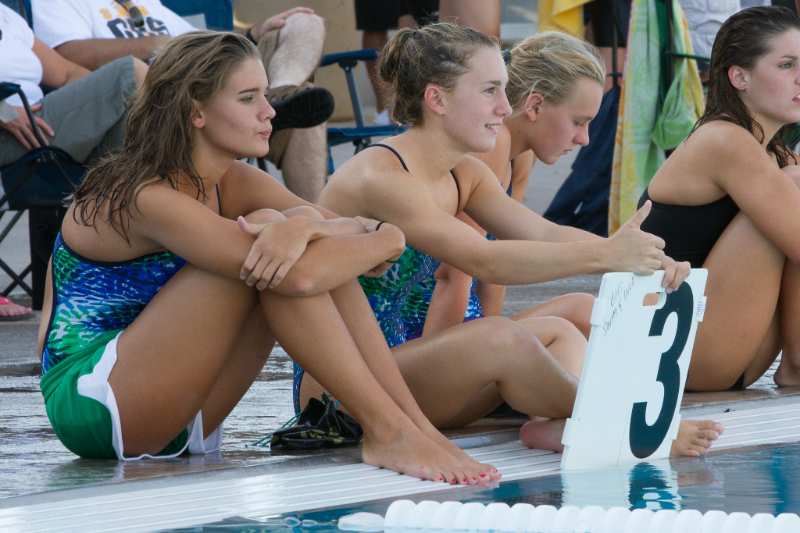
Other devices that measure distance swum, like my Apple Watch, measure each time you cross the pool as a single lap.
The below workout, done in a 25-meter pool, totaled a distance of 2,000m.
As you can see, the device counted it as 80 laps (80×25 = 2,000).
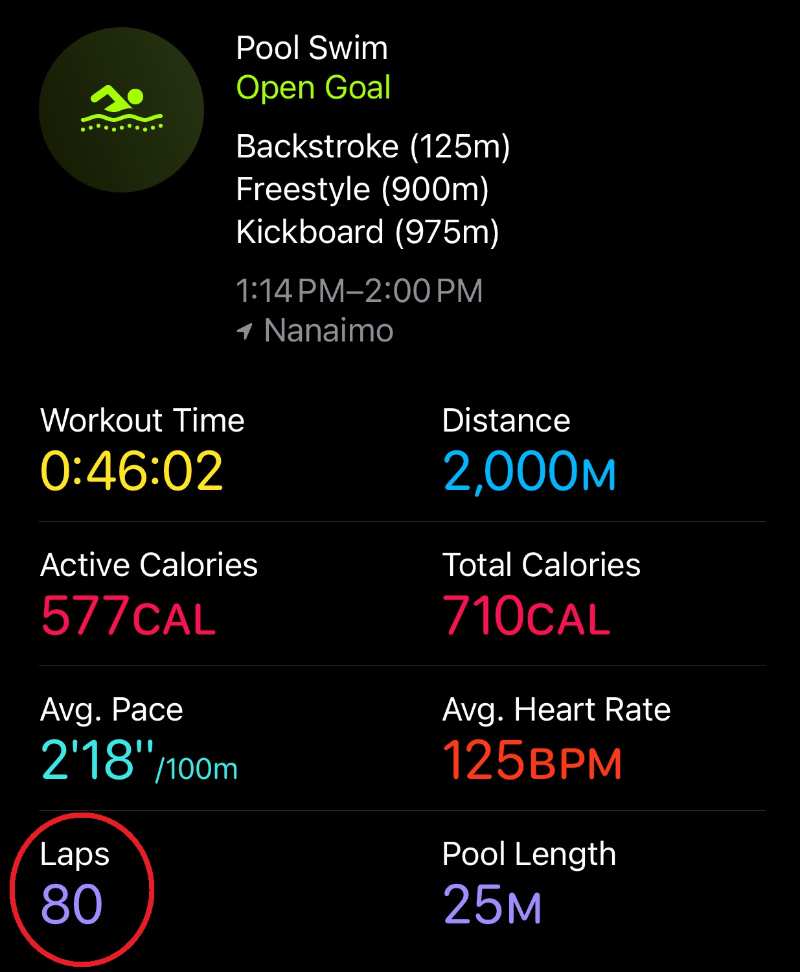
According to the devices and tools that swimmers use to track and count laps while swimming, laps and lengths are synonymous.
While the battle between laps vs lengths has been relatively consistently in favor of the terms meaning the same thing, there are some instances where things get confusing.
The pool water gets a little cloudy when we consider the term “lapping someone.”
To lap someone in the pool means you overtake a swimmer by two additional lengths. It doesn’t matter if it’s a short course or long course pool, lapping a fellow swimmer signifies that you’ve completed two more lengths.
Yes, I know. I can hear your brain splitting in half with confusion. You don’t hear someone saying “I lengthed him.”
This is one of the rare instances where the two terms diverge from one another in the pool.
One of the many comparisons when this topic comes up is between track distance and pool distance.
In track, a lap is one full go-around of the course. You run around the full length (ha!) of the course and end where you start. In track, a lap is the completion of the circuit of the course.
A swim lap, on the other hand, is primarily considered the completion of one length of the pool. According to world and national swimming bodies, and Webster’s Dictionary, a lap and length are the same thing.
There are those who argue that the definition of a track lap carries over to the water, but this is not a consensus opinion by any length (pun intended).
Lap and length are ultimately the same when it comes to a majority of lap swimmers, competitive swimmers, and swimming organizations.
Getting lost in swimming terminology at times can feel like you are learning a whole new language (Early vertical forearm, DPS, descending ladder sets, suicide turns, psych sheets, “on the red top!”, negative splits, and so on).
Ultimately, whether you want to call it a lap or a length, the only thing that matters is getting into the water and swimming them 😊.

Olivier Poirier-Leroy Olivier Poirier-Leroy is the founder of YourSwimLog.com. He is an author, former national level swimmer, two-time Olympic Trials qualifier, and swim coach.
✅ Free shipping on Orders over $49
✅ Price Match Guarantee
✅ Best selection of gear for training and competition
✅ Fast and Easy Returns

“This is the best book I have ever seen concerning mental training.” — Ray Benecki, Head Coach, The FISH Swim Team


Looking for tips on how to use a drag chute for improved swim performances? Read on for some proven tips, sets, and pointers for training with a chute.

Ready to take your swimming to the next level? Here are seven ways that a drag chute can help you become a better and faster swimmer.

Wondering if a swim bench can help improve your swimming? Here are six benefits of swim benches for better technique, more power, and faster swimming.

Not breathing into the walls is one of the fundamental skills developing swimmers are taught. Here is how powerful a no-breath approach is for turn and swim speed. Strong training habits are something swimmers hear a lot about from their earliest days of their competitive swimming careers. The greatest hits

Drills with a swim snorkel are one of the best ways to maximize engagement and skill development. Here are five swim snorkel drills to try for faster swimming.

Looking to add some flavor to your kick sets and workouts? Here are some kickboard drills swimmers can use for faster swimming.
SITE
SHOP
GUIDES

LANE 6 PUBLISHING LLC © 2012-2025
Join 33,000+ swimmers and swim coaches learning what it takes to swim faster.
Technique tips, training research, mental training skills, and lessons and advice from the best swimmers and coaches on the planet.
No Spam, Ever. Unsubscribe anytime.
